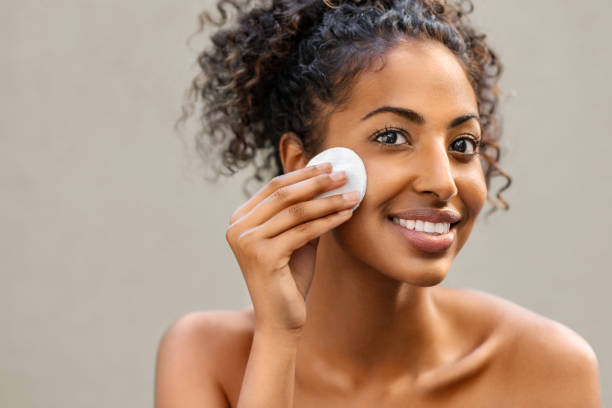Acne results from plugged hair follicles. Oil, dirt, and dead skin cells on the surface of your skin clog your pores and create pimples or small, localized infections. Below are basic routines that can help clear acne.
1. WASH YOUR FACE GENTLY AND THOROUGHLY
You should wash your skin twice a day: in the morning and evening. But at the bare minimum, wash your face every night.
The night time wash is basically the easiest thing to do when it comes to caring for your skin, and it holds true even if you don’t wear makeup. During the day, natural oils and sweat accumulate on the skin. You are exposed to the environment, which means that dirt and pollution build up on our outer skin layer. Not removing all of this dirt and gunk at the end of the day can cause skin irritation, inflammation, and acne breakouts.
Plus, if you’re putting on products like treatments, serums, moisturizers, or night creams before bed, you’ll want to wash those off in the morning before putting on your daytime products.
Just keep in mind that you may need to use a different cleanser in the morning than the one you use at night. If you have dry or sensitive skin, for instance, you may want to use micellar water or a gentle cleanser in the morning.
2. APPLY AN ACNE TREATMENT
The treatment that’s right for you depends on your individual condition. If you have mild to moderate acne, such as whiteheads or blackheads, your treatment should be relatively easy. However, if you have cystic or inflammatory acne, your treatment may be more challenging. Cystic acne is one or more large, painful, red cysts under the surface of your skin. Your doctor or dermatologist can help you figure out what type of acne you have.
3. APPLY A NON-GREASY MOISTURIZER
After slathering your other skincare products, you can apply moisturizer. Aim for about a quarter-size amount and make sure to reach every area, including your ears, hairline and neck.
- Don’t press hard or rub.
- Apply in an upward motion to help create a subtle lifting effect.
- Creams are best applied by patting them gently into the skin, notes Dr. Mack.
- Gel or water-based moisturizers should be applied in circular motions until they are completely absorbed.
- You should moisturize no less than two times per day after washing your face, and any other time you’ve showered or washed (like after exercise or swimming).
4. APPLY SUNSCREEN
As a rule of thumb, you need about a nickel-sized dollop for your face.
A common mistake is to apply sunscreen to the forehead, cheeks, nose, and chin, but forget other sensitive areas. Give attention to all areas of exposed skin, including the front and back of your neck, upper chest, upper back, and shoulders. The tops of the ears are also easy to forget, so don’t miss this area!
5. APPLY A RETINOL PRODUCT BEFORE BED
Sunlight makes vitamin A in retinol less effective, so applying it before you go to bed helps you get the full effects of the cream. Since you don’t have to wash the retinol off after you put it on, you can let it absorb into your skin overnight while you’re sleeping.
It’s especially sensitive to light, which is why it’s kept in dark packaging or packaging that doesn’t let any light through. In order to avoid unnecessary sun damage, only ever apply retinol before you go to bed.
For more on skincare routine, visit https://www.acnefreeclub.com/blog/ now.
Conclusion
Not everyone loves a 5-step routine, so don’t feel pressure to include every step in the above lists.
The most important thing is finding a skin care routine that works for you and that you’ll follow. Have fun while at it.
You can also find time to Visit our Instagram page for more information https://www.instagram.com/dianalily_acnefreeclub/?hl=en

